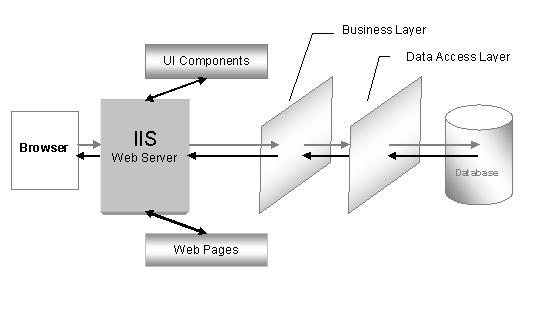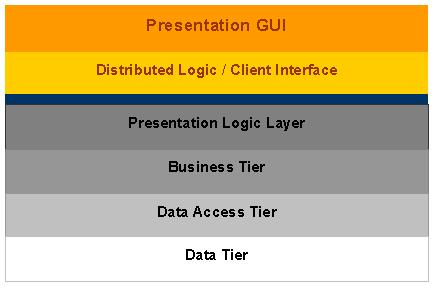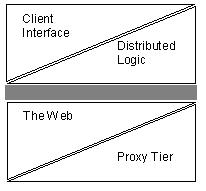The Presentation Layer in an N-Tier structure is commonly referred to as the “client” layer. It consists of parts that are used to present data to an end user. Examples of components on the Presentation Layer might include edit boxes, labels, text boxes, grids, buttons, Windows or Web forms, or more. The Presentation Layer can be either Windows based or Internet based.
What an Internet Based Presentation Layer Looks Like
Let us take a look of a correctly formatted Presentation Layer. This one consists of a Web server (IIS, in this instance), Web Pages, and Web Components.

All of this will be seen by the end user on a browser, such as Internet Explorer. Simple, right?
Now let’s take a look at a more in depth Presentation Logic Layer.
N-Tier Layers Close-Up

Presentation Logic Layer Close-Up

As you can see by the diagram above, the Presentation Logic Layer works so as to provide your user with an interface in to your application. It consists of standard things you are probably already quite familiar with, including Windows forms and ASP documents. It thus relies on the results generated by the Business Tier in order to transform data in to something that can be used, read, and understood by the end user.
Conclusion
The presentation layer is also sometimes referred to as the client layer. It consists of components that serve to present data to the end user. This data might include Windows or online buttons and forms, boxes for editing or texts, grids, labels, and more. In short, the presentation layer is a key component of any N-Tier system; without it, as the name infers, nothing will be presented to the end user, no matter how well the system functions otherwise.
[catlist id=144].
